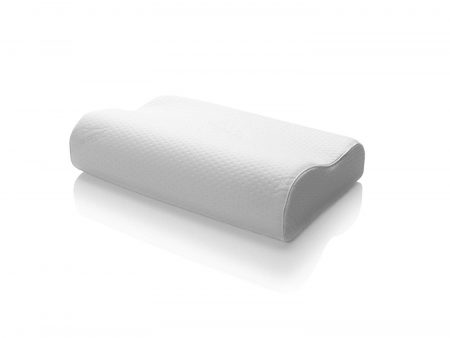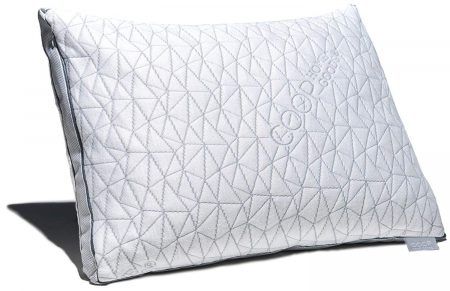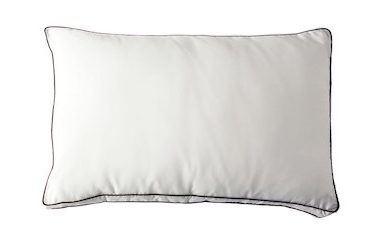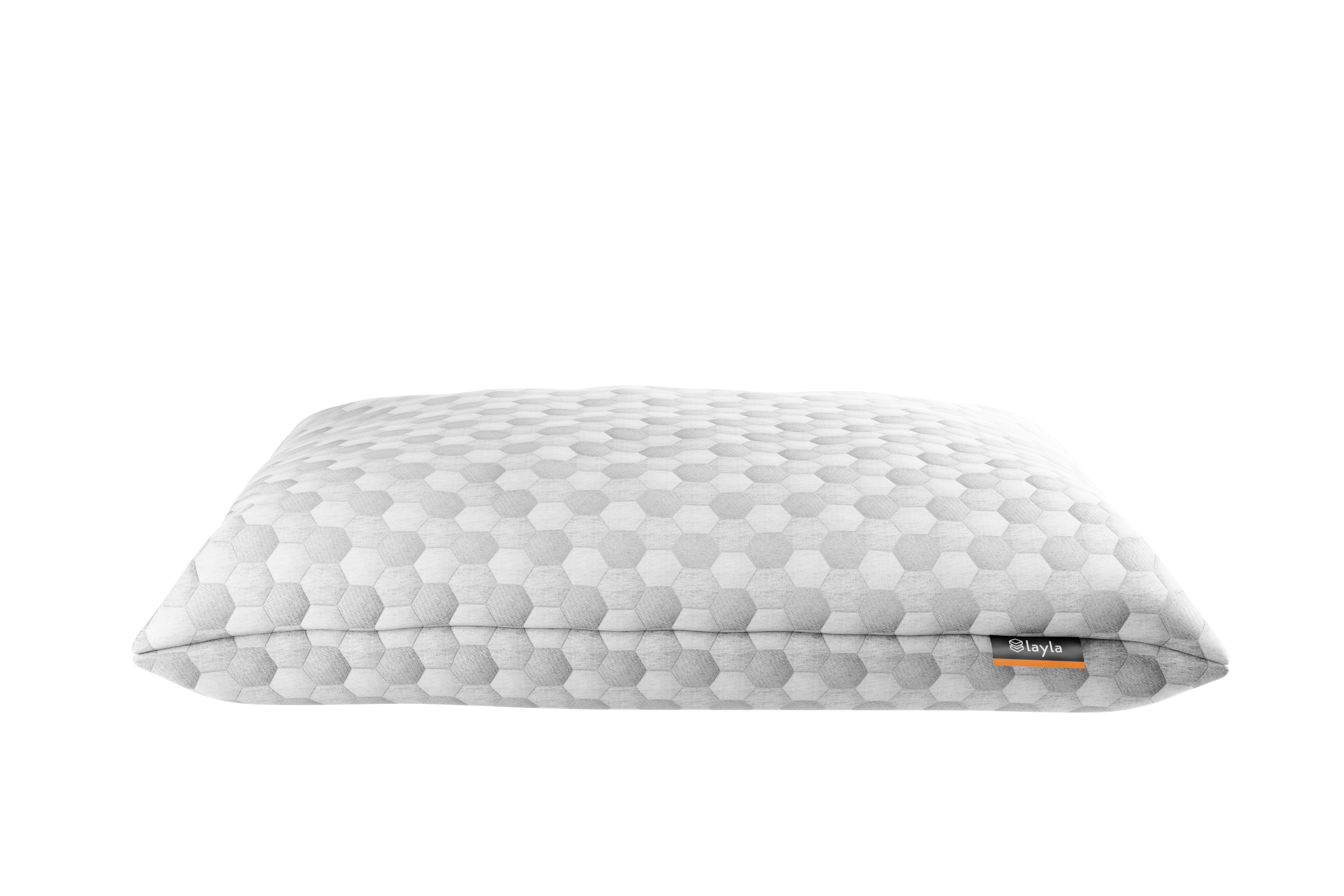Buying Guide - How to Shop for the Best Pillows for Back Pain
Back pain is, unfortunately, quite common among adults and children. Causes of back pain may include anything from muscle strains and arthritis to skeletal irregularities such as scoliosis. The right pillow can mitigate some of the pressure and discomfort associated with back pain — and by the same token, choosing the wrong pillow can have the opposite effect. Sleepers with back pain should consider factors like pillow size, shape, loft (thickness), and material composition when deciding which pillow will best meet their needs.
This guide explores the causes and symptoms of conditions that can lead to back pain, as well as tips for pillow buyers and our picks for the best pillows for back pain.
How Does Back Pain Affect Sleep?
Millions of Americans are living with chronically painful conditions. Pain is a leading cause of disability and the major contributor to healthcare costs. Back pain sufferers account for as much as 50 percent of America’s working population. Unfortunately, frequent pain often contributes to a lack of sleep. At the same time, not getting enough sleep increases the risk of chronic pain syndromes. For those suffering from back pain, getting comfortable enough to sleep is an especially delicate issue.
How Back Pain Negatively Impacts Sleep
If you’re not able to get your spine into the most ideal alignment and get as much support as possible, it will likely mean enduring more pain during the night. Before attempting to sleep, it might be best to consider how your sleep position might play a role in keeping you from getting enough rest.
For instance, sleeping on your back is actually considered the best possible position for proper spine alignment. If you experience frequent back pain, you might believe that sleeping on your stomach is the best possible way to avoid pain. In actuality, sleeping on your stomach is one of the worst positions for spine alignment and if you lack proper support from mattresses and bedding, this position might be backing your back condition worse.
When back pain keeps you from sleeping, you’re kept from getting the rest you need to be at your best the next day. Prolonged sleep deprivation often has severe consequences.
- The body is unable to heal and recharge: When your back hurts too much to sleep, you’ll lose hours tossing and turning, unable to enter the healing stages of deep and REM sleep. It’s during sleep that your body removes toxins from your brain that build up while you’re awake. If you’re unable to cope with pain well enough to get rest, not only are you risking a risk in chronic pain, but also limiting your body’s ability to heal and recharge overall.
- Greater risk of accidents or injury: Even though news stories and research is readily available about the dangers of drunk and distracted driving, operating a vehicle while sleepy can be just as dangerous. When you’re sleep deprived, your reaction time slows, which can lead to dangerous situations while driving.
- Your chronic pain gets worse: As already stated, a lack of sleep actually raises your risk of developing chronic pain. A vicious cycle can develop where a lack of sleep due to back pain increases your symptoms which, in turn, makes it harder to sleep.
The implications of poor sleep are severe, so it’s important to do what you can to get a good night’s sleep and help your body. Fortunately, there are ways you can cope with chronic pain during the day that can ease symptoms enough to sleep at night.
Ways To Cope With Chronic Back Pain
Although it might seem out of your control, there are certain changes you can make in your everyday life that can ease the symptoms of chronic back pain. A few suggestions include:
- Take up yoga: Yoga is an ancient fitness practice with scientifically proven health benefits. For instance, study results suggest that yoga is an effective form of physical therapy for improving moderate to severe lower back pain.
- Avoid sitting or standing in one place for hours at a time: It’s very common that certain occupations where one sits with poor back support for a very long time can contribute to lower back pain.
- Consider weight loss options: Carrying extra weight around the midsection can make you vulnerable to developing chronic back pain conditions.
- Change your sleep position: Certain positions, such as sleeping on your stomach or in a fetal position, can put extra strain on your spine and cause pain. The best positions for avoiding these conditions are sleeping on your back or side.
Lastly, you should develop a series of bedtime habits that you act out every night when it’s getting close to bedtime. Turn down the lights, take a soothing bath, and read for a few minutes. Make sure activities are relaxing and that they encourage you to feel physically ready for bed. You’ll also want to make sure that you repeat these habits each night at around the same time as a way of training yourself to get ready for bed.
Additionally, make sure that your mattress and bedding are at an optimal firmness and softness level that will help you more easily cope with back pain. The combination of back support and improved sleep hygiene can help you ease chronic back pain symptoms over time and allow you to more easily sleep through the night.
Pillow Positioning Options for People with Back Pain
Individuals who experience back pain can adjust or reposition their pillows in order to alleviate their discomfort. According to Healthline, the following methods may be suitable for different sleepers:
- Side sleeping with a pillow between the knees. You should ensure your body makes contact with the mattress between your shoulder and buttocks. The pillow should be placed in a position where it won’t slip out; this will help the hips and pelvis align with the spine, which can reduce pain and discomfort. If a gap forms between your side and the mattress, then a smaller pillow may be used to fill that space.
- Fetal position with both knees tucked. To achieve this position, lie down on your back and then roll onto one side with both knees bent and tucked toward your chest. Bend your upper body toward the knees; this will help expand the spine and alleviate pressure on the disks. Be sure to rotate to the other side if you begin to experience discomfort.
- Stomach sleeping with a pillow beneath the pelvis. Although stomach sleeping can exacerbate back pain symptoms, a pillow placed under the pelvis can relieve stress on the neck and back disks. Some sleepers in this position are more comfortable without a pillow beneath their head.
- Back sleeping with a pillow beneath the knees. Lay flat on your back and place a pillow beneath both knees. This helps straighten out the spine and alleviates pressure points between the neck and hips. If you find this is insufficient, consider placing a rolled-up towel under your lower back.
Understanding Pillow Size, Shape, and Loft
There are six standard sizes for pillows, as well as smaller specialty sizes normally associated with specific pillow types (such as orthopedic memory foam pillows). The following table breaks down the width and length dimensions of these seven sizes, as well as suitable pillowcase measurements.





